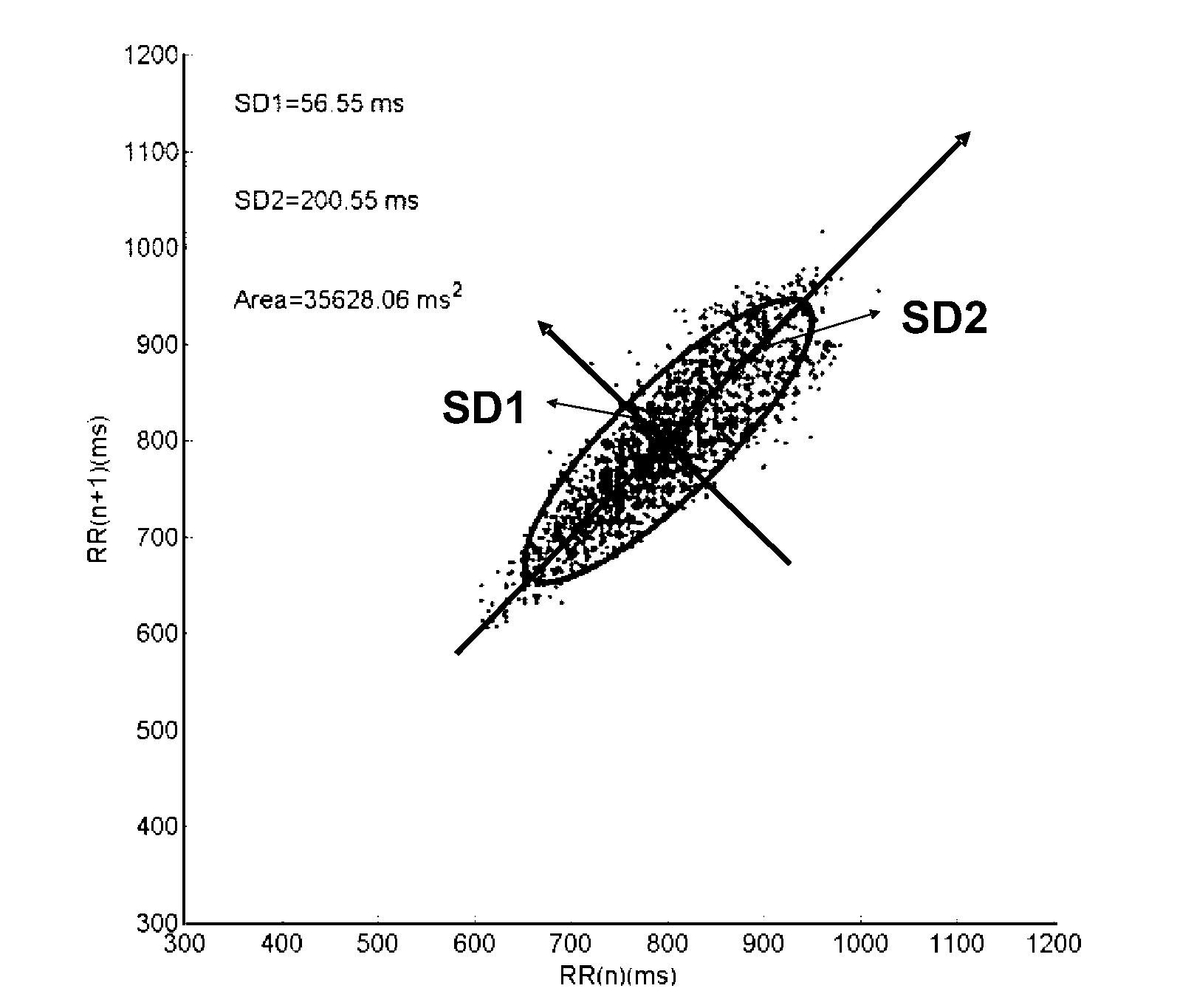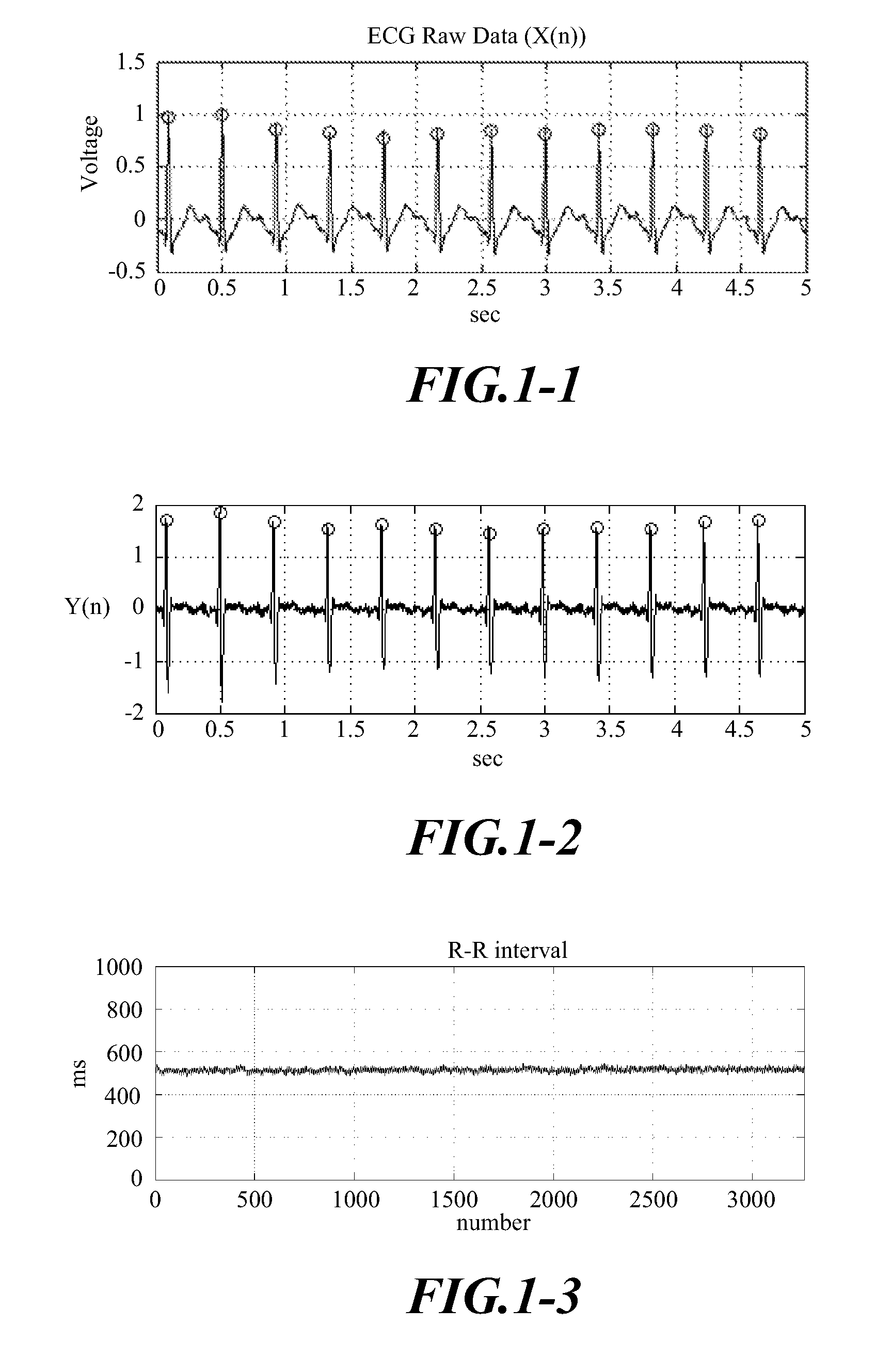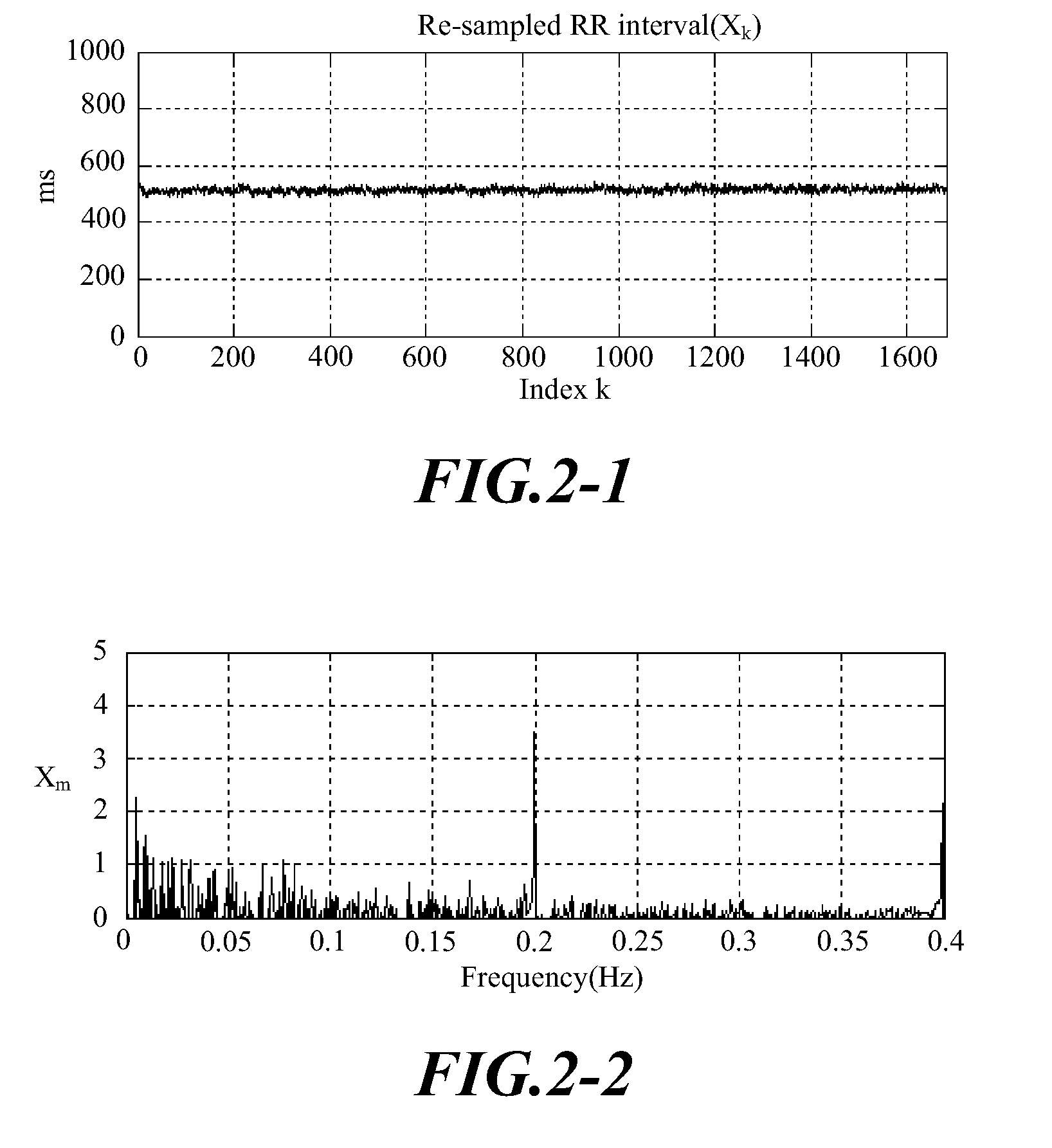Method for analyzing irreversible apneic coma (IAC)
a technology of irreversible apneic coma and analysis method, which is applied in the field of analyzing irreversible apneic coma (iac), can solve the problems of insufficient relative studies, brain death, and patient with irreversible apneic coma (iac) having a great risk of brainstem failure, etc., and achieves the effect of accurately determining the exact point and a large amount of data
- Summary
- Abstract
- Description
- Claims
- Application Information
AI Technical Summary
Benefits of technology
Problems solved by technology
Method used
Image
Examples
example 1
Collection of Clinical Data
1. Subjects Studied
[0042]Based on the presence or absence of IAC (irreversible apneic coma) as well as on GCS (Glasgow coma scale), subjects studied in this example were divided into 3 groups. As shown in Table 1, the first group consisted of healthy subjects (normal) of 22-25 years old as control. The second group consisted of ordinary patients without IAC in neurosurgical intensive care unit of National Taiwan University Hospital (Taipei, Taiwan) and they were divided into two sub-groups of light coma (9-15) and deep coma (4-8). The third group consisted of patients with IAC in neurosurgical intensive care unit of National Taiwan University Hospital. They were adults with severe brain traumatic IAC caused by head injury. Since sympathetic storm is a mechanism caused by local ischemia in brain spinal, patients with automatic nerve disorder caused by other factors, such as, for example, brain ischemia due to trauma, spinal nerve injury, cardiac arrhythmia,...
example 2
Experimental Analytical Method
1. Heart Rate Variability (HRV)
[0047]Heart rate variability (HRV) of subjects was analyzed using R-R intervals. In this example, two methods for detecting R-R intervals were used: the first one was based on the method proposed by Meard [19] in which First Derivative (FD1) was used to detect R-R intervals. In this example, 30-minute ECG information (as shown in FIG. 1-1) was treated by dividing the information into 2 seconds per one unit. The method comprised is as follows:
[0048]X(n): ECG raw data
Y(n)=−2X(n−2)−X(n−1)+X(n+1)+2X(n+2)
2
[0049]FIG. 1-2 shows the result after transforming the information into Y(n). As shown in FIG. 1-2, among ECG signals, Q wave and S wave with original positive and negative values, respectively, were transformed into values near 0, while R wave remained no significant change. Next, for detecting the position of R wave in Y(n), a slope threshold was defined as follow:
Slope threshold=0.7max[Y(n)] 2<n<1000 (2)
[005...
example 3
Results
1. Analysis of Poincaré Plots
[0082]Every subject of each group was analyzed individually for R-R interval, and separately drew Poincaré plot for each subject (as shown in FIG. 3-1 to FIG. 3-58). In addition, the R-R interval of each subject was analyzed by Power Spectral, statistical method, and Poincaré plot. Results were shown in Table 2-1 to Table 2-5.
[0083]Due to the great variability of R-R intervals among healthy subjects (normal) in the first group, Poincaré plots of all 16 healthy subjects were of comet type distribution (as shown in FIG. 3-1 to FIG. 3-16). Their Poincaré plots exhibited features as: (1) bigger area; (2) longer SD2; (3) SD1 / SD2 of about ⅓. Because Poincaré plots displayed a distribution on the diagonal, it is suggested that subjects demonstrated a close adjacent heart beats. Further, since points on Poincaré plots spread within effective range in a comet shape, it is suggested that under long-term monitoring, subjects exhibit great heart rate variabil...
PUM
 Login to View More
Login to View More Abstract
Description
Claims
Application Information
 Login to View More
Login to View More - R&D
- Intellectual Property
- Life Sciences
- Materials
- Tech Scout
- Unparalleled Data Quality
- Higher Quality Content
- 60% Fewer Hallucinations
Browse by: Latest US Patents, China's latest patents, Technical Efficacy Thesaurus, Application Domain, Technology Topic, Popular Technical Reports.
© 2025 PatSnap. All rights reserved.Legal|Privacy policy|Modern Slavery Act Transparency Statement|Sitemap|About US| Contact US: help@patsnap.com



